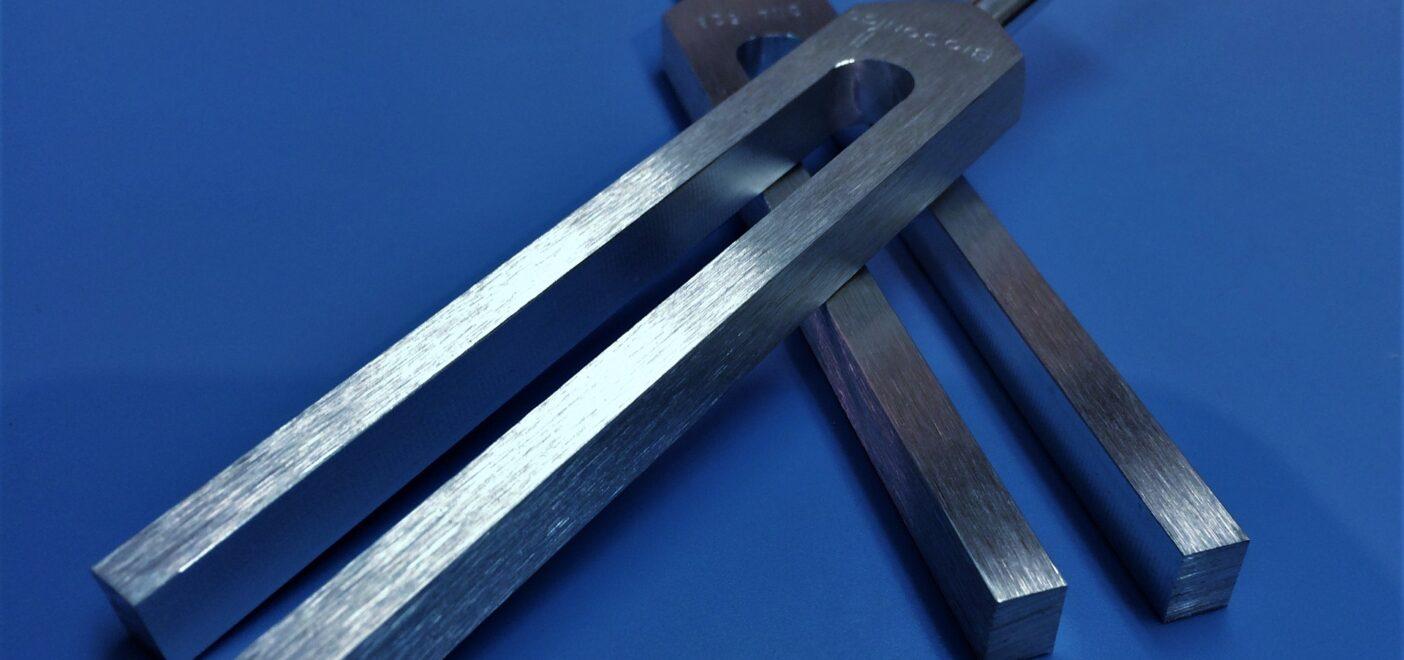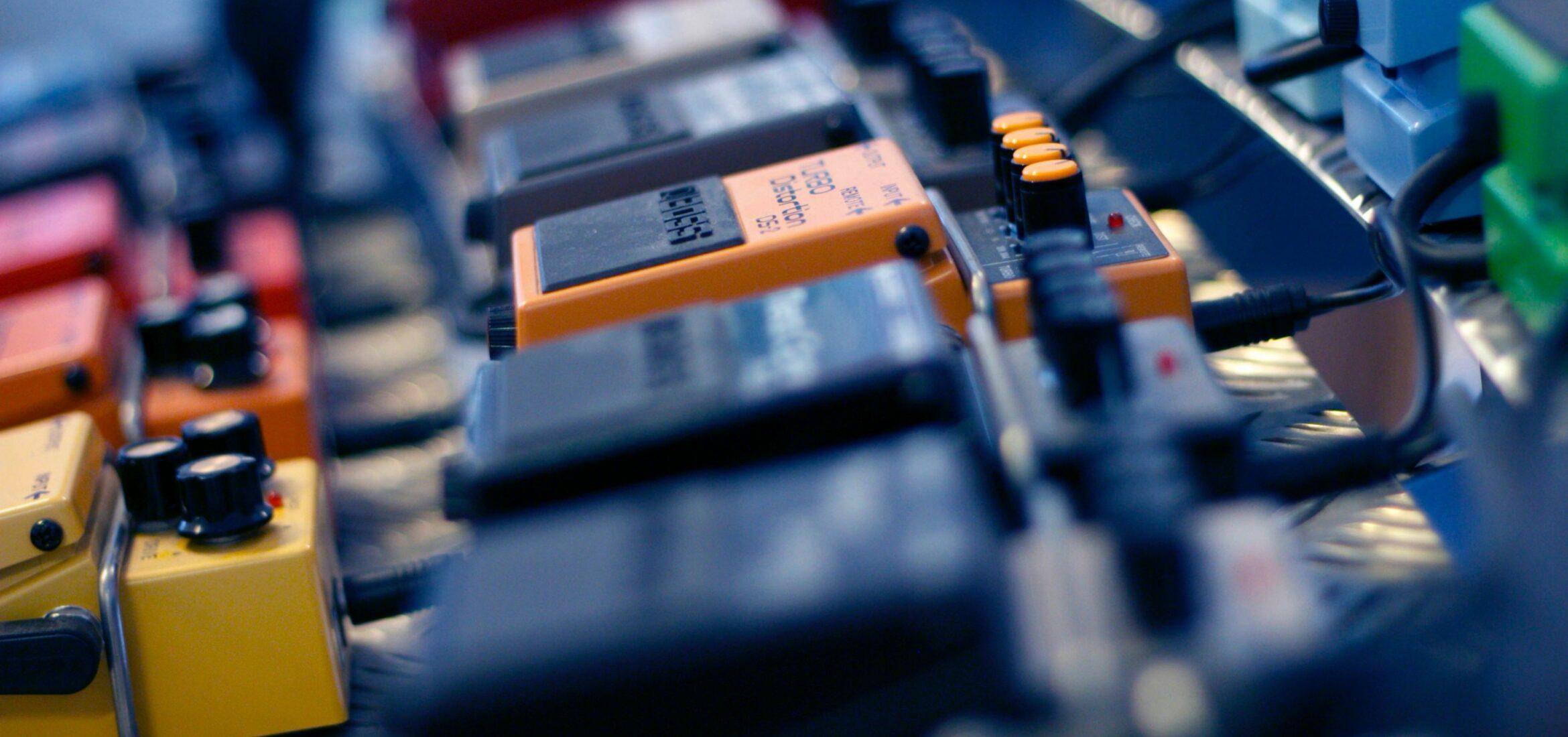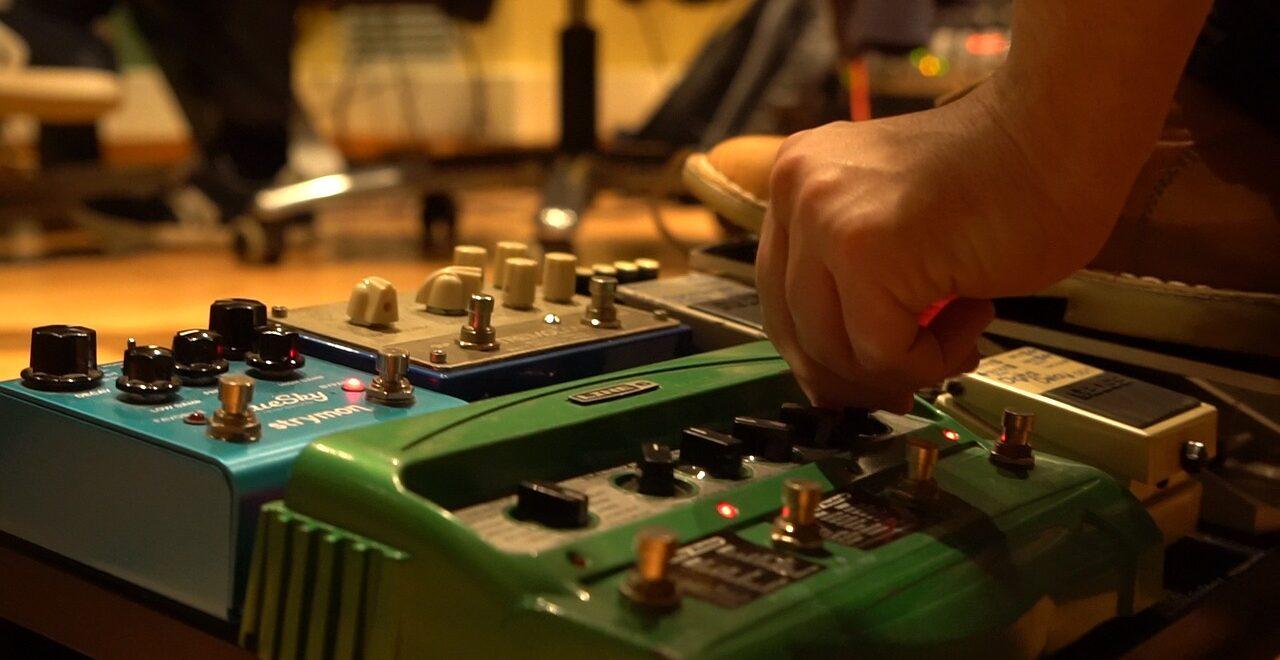Human beings are many things, but perfect is not one of them. Whenever a human voice or body is involved in the recording process, mistakes will be made. We’ve already gone over why we should be open to making mistakes, but this doesn’t satisfy our desires all the time. Sometimes, we want the guitarist to perform a perfect bend, or the vocalist to hit the perfect note. For several decades now, the technology of pitch correction has minimized human error and allowed musicians and producers to inch closer to perfection. This quest for perfection can risk resulting in robotic, inhuman-sounding performances. But how one uses pitch correction depends on one’s goals with a given song and mix. And there’s a lot more to pitch correction than one might think.
Pitch correction: a brief history
Like all technology, pitch correction arose as a solution to a problem. The primary problem, in this case, was vocal production. While many recording artists could hold their own vocally, even small errors could amount to major time losses. Before pitch correction technology, the only way to improve a vocal line was to record the vocals again.
The solution to this problem started emerging in the 1970s, with Eventide’s H910 Harmonizer. This device was the first of its kind; a multi-purpose box that included pitch shifting with an octave (up and down) range. Two decades later, Antares Audio Technologies introduced Auto-Tune, software that automated and refined the pitch correction process. In 1998, consumers and producers alike noticed the viability of this technology as both tool and effect with Cher’s hit song, “Believe,” one of the first and most successful releases to implement Auto-Tune.
Techniques in pitch correction
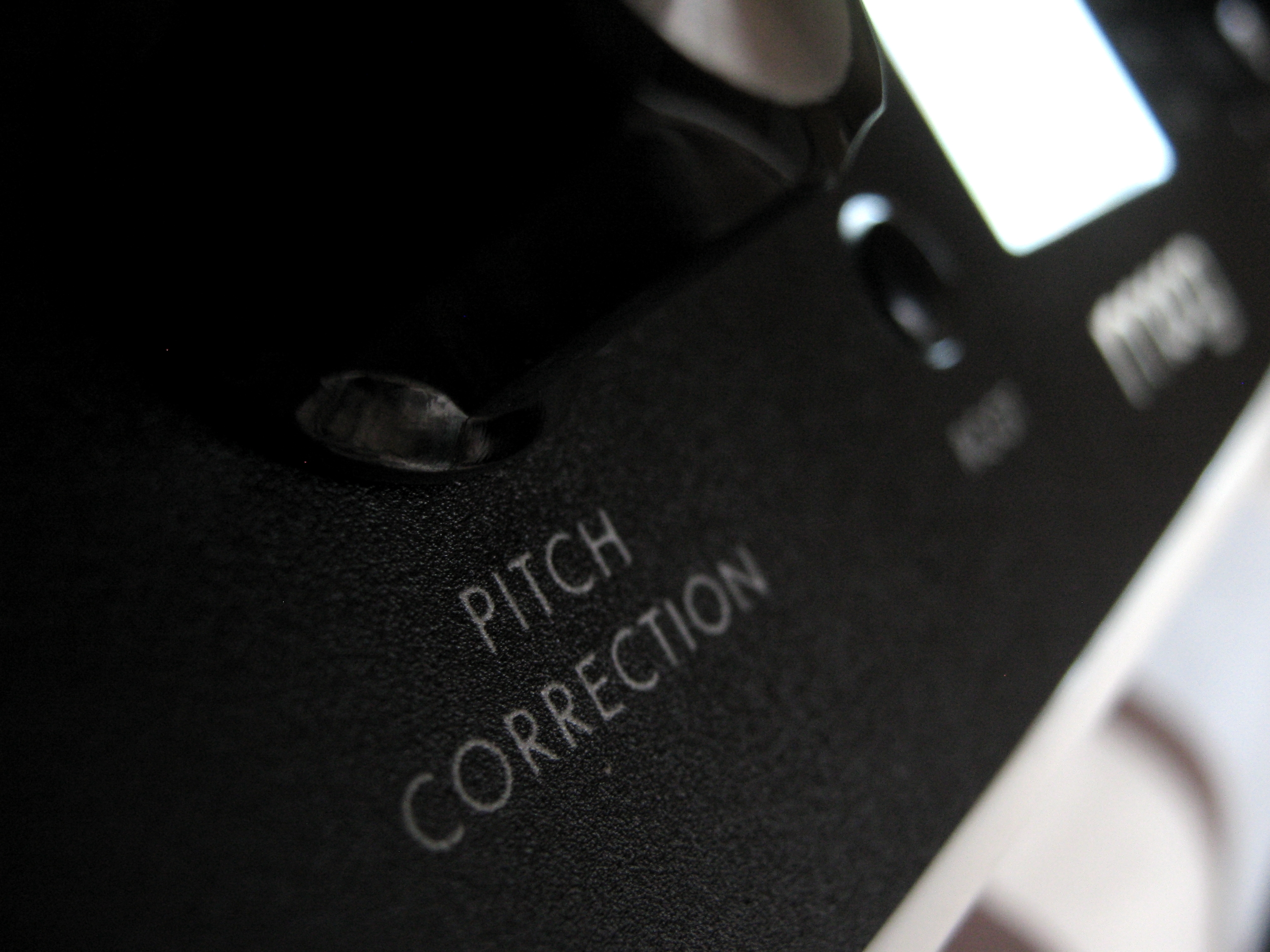
While the primary purpose of pitch correction technology is to correct pitch, of course, there are different approaches and techniques used to achieve this. Several factors make up the human voice or any monophonic instrument. These harmonic signatures indicate the source of the audio. A voice sounds different than a guitar, for instance, because of its different harmonic signatures. So, when it comes to correcting pitch, other aspects of sound matter, too. If one simply shifts a held vocal note from a D to an E flat, this minor change can yield an unnatural sound. In order to avoid this artificial result, one wants to maintain as much of the harmonic signature as possible while correcting the note. On the other hand, if one wants a more synthetic sound, keeping less of the harmonic signature would be desired.
In every pitch correction program, you’ll find similar terms and parameters. Some programs use different names for similar functions. Regardless of semantics, these tools within the software give the user control over the tone, pitch, and overall quality of the sound. Let’s look at some of these parameters and how they affect a note processed through pitch correction software.
Formant
This term refers to the frequencies made by the human voice when forming vowel sounds. In other words, it deals with how wide the throat opens when producing a vocal note. The formant will vary for different pitches. Therefore, shifting a note up or down naturally results in different formants. This is something to consider when artificially correcting pitches.
Vibrato
Vibrato causes a note to rapidly waver in pitch. This can be done on string instruments by vibrating the wrist or finger, or through vocal breath and muscle movement. The more vibrato, the richer and more natural the tone. Removing natural vibrato from the vocal recording results in a smoother, robotically precise performance. Controlling the level of vibrato makes a big difference when making pitch-corrected vocals sound more or less natural.
Transition
This refers to how one note leads to another. The human voice cannot and does not immediately jump from one note to the next. It instead quickly ramps up or down the scale to reach the right note. Maintaining these transitions when correcting pitches keeps the vocal line natural sounding. Conversely, removing these transitions makes the vocals sound synthetic. Most pitch correction programs automatically maintain these transitions, which can later be adjusted for steepness.
Some of the best programs for pitch correction
No matter how you personally feel about the use of pitch correction, it has undoubtedly made an impact on modern music production, improved “bad” recordings, and spread its influence over just about every genre, from country to metal. While Auto-Tune has become a catchall term for this technology, it hasn’t monopolized the market entirely. Several other comparable pitch correction programs exist today, each with their own interfaces, features, and abilities.
Antares Auto-Tune
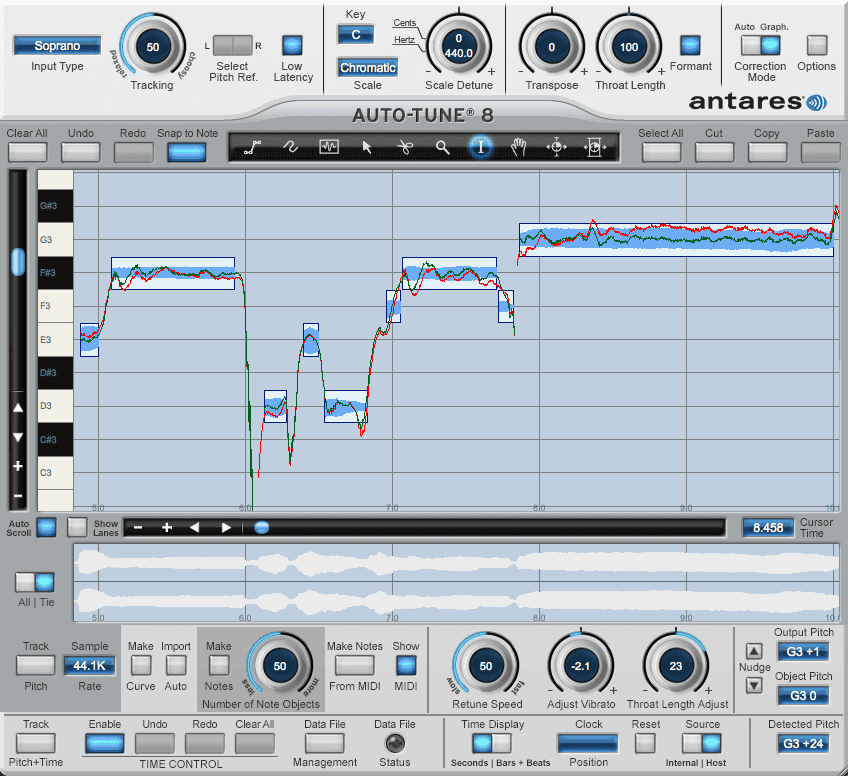
The pioneer of automatic pitch correction, Auto-Tune works in real time to augment solo notes, putting them precisely where they belong in key. One simply has to input the type of scale (major, minor, chromatic, etc.) so that the algorithm knows where to map each individual note after processing the audio. Not only does the software feature the aforementioned Automatic Mode, but also Graphical Mode, which allows the user to manually shape notes in both time and pitch.
Auto-Tune goes even further to maximize vocal performance. While it detects and corrects pitch and timing, it also maintains and enhances vocal color and texture. The Throat Length parameter can be used to augment individual notes. One can also add or enhance vocal vibrato to any given note or section, adding another layer of precision to mixing vocals.
Celemony Melodyne
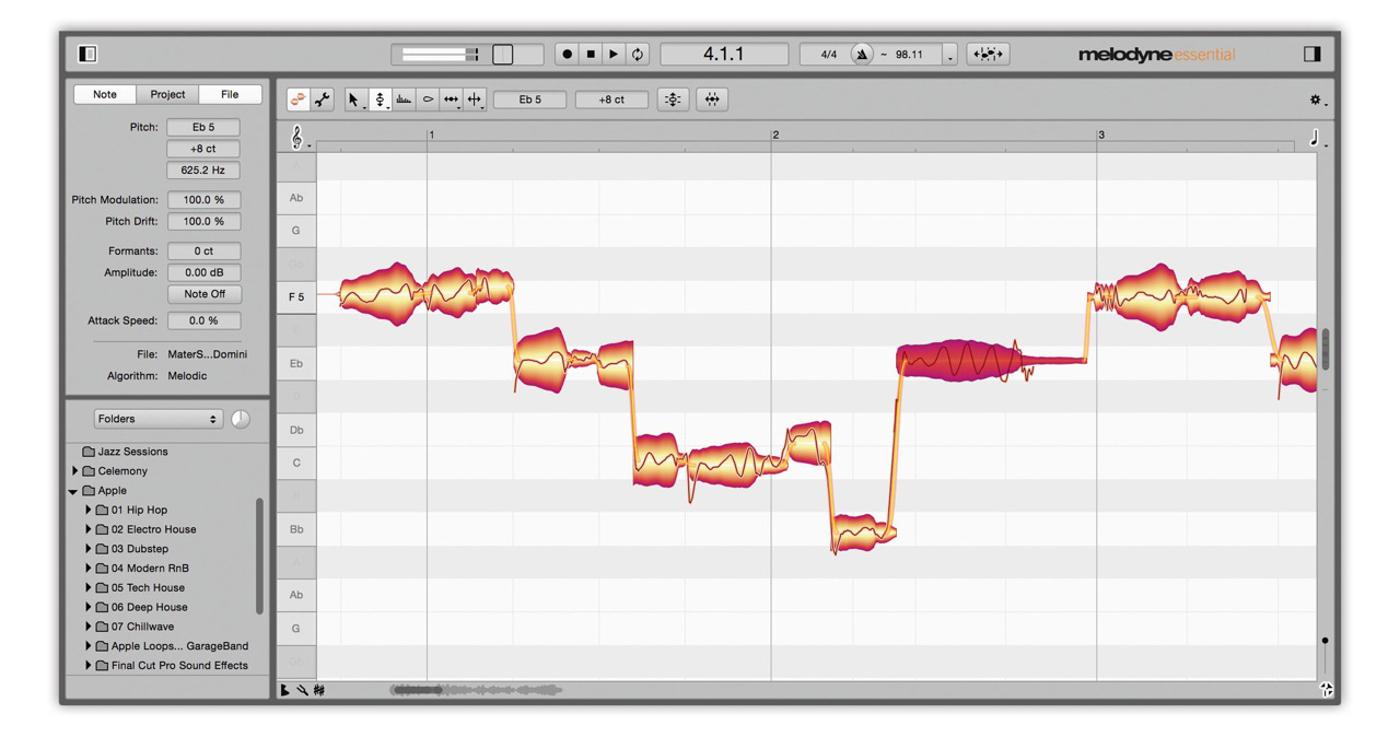
Perhaps Auto-Tune’s closest competitor, Melodyne provides a powerful alternative in pitch correction software. With a welcoming user interface, Melodyne keeps things pretty simple. Waveforms of the same note are broken down into “blobs,” which can then be manipulated with all the parameters featured in Auto-Tune’s graphical function. From pitch to timing to vibrato and more, Melodyne covers all the bases. The program also allows multi-track editing, streamlining the pitch correction process.
Pitch correction and manipulation within DAWs
The prominence of programs like Auto-Tune has led most DAWs to include their own comparable pitch correction features within their software. Here we’ll examine Flex Pitch in Logic Pro and VariAudio in Cubase.
Flex Pitch in Logic Pro X
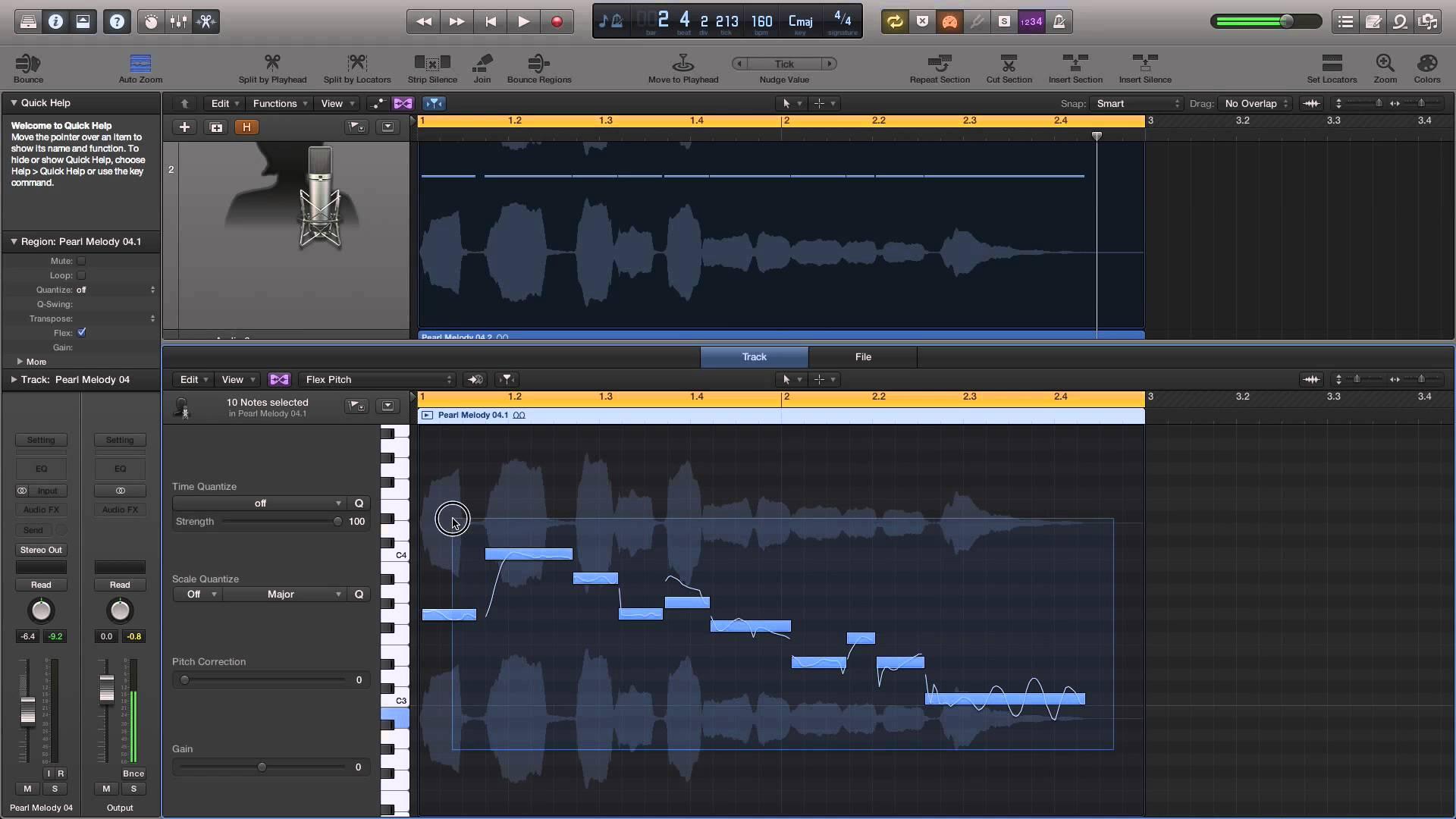
While previous versions of Logic featured Flex Time, it wasn’t until Logic Pro X’s release that Flex Pitch came to life. This pre-loaded feature alone adds a lot of value to the most recent edition of Logic. Like Auto-Tune, Flex Pitch allows you to choose the key of the melody via “Scale Quantize,” making it easy for the DAW to figure out where notes belong. The interface somewhat resembles Melodyne, simplifying waveforms of the same note into an adjustable line instead of a blob (like on the piano roll editor).
Flex Pitch also comes packed with vibrato control with a percentage rating. The formant shift feature imitates the throat length parameter in Auto-Tune, affecting the natural overtones of the human voice. Overall, Flex Pitch might be better for fine-tuning minor pitch issues for vocals and solo instruments. Still, it’s a great tool that comes right with Logic Pro X.
VariAudio in Cubase
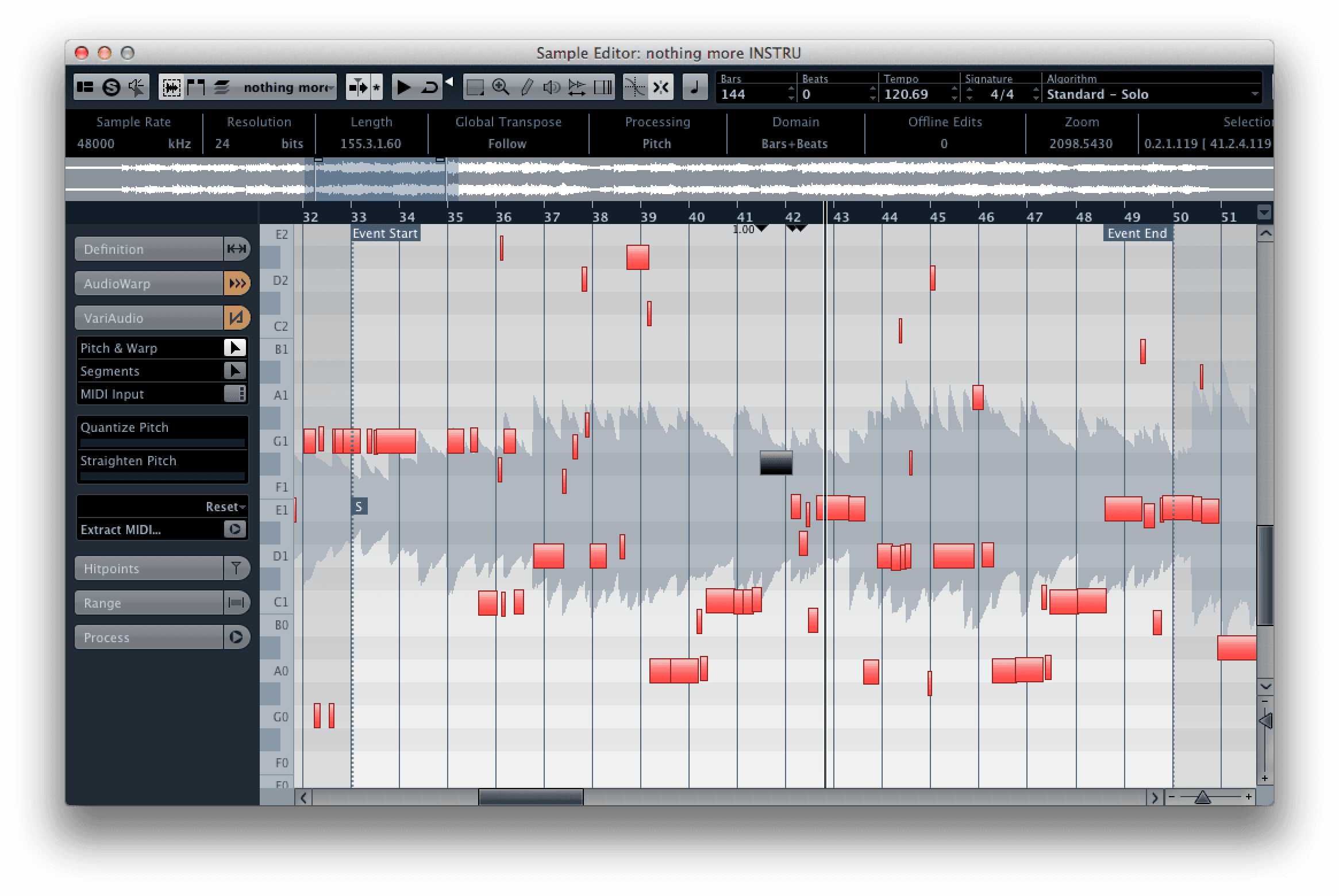
Cubase 5 introduced VariAudio, another pitch correction and modulation tool for monophonic instruments and vocals. The interface looks very similar to both Melodyne and Flex Pitch, breaking down waveforms into individual notes. Using the “segments” tool, single notes can be split anywhere and separated by pitch or other parameters. The “straighten pitch” function works like the vibrato function in Flex Pitch, flatting wavering notes for a smoother, more precise, and more robotic pitch.
In many ways, VariAudio and Flex Pitch are the same, with minor differences in interface and parameters. This works out well for those who prefer one DAW over the other since both have similar pitch correction features.
How pitch correction can improve your mix
Obviously, most of us want to hear songs with clear melodies, properly in tune and in key. But pitch correction can do more for your mix than simply adjust notes. As previously mentioned, all of these programs can shape the very tone and color of a vocal performance or instrument. Even if the performer nails every note, more can be done to the track using the tools within pitch correction. Adding vibrato or adjusting the formant length can help the track stand out or better blend into the mix. Amazingly, all of these things can be fixed without re-tracking the section.
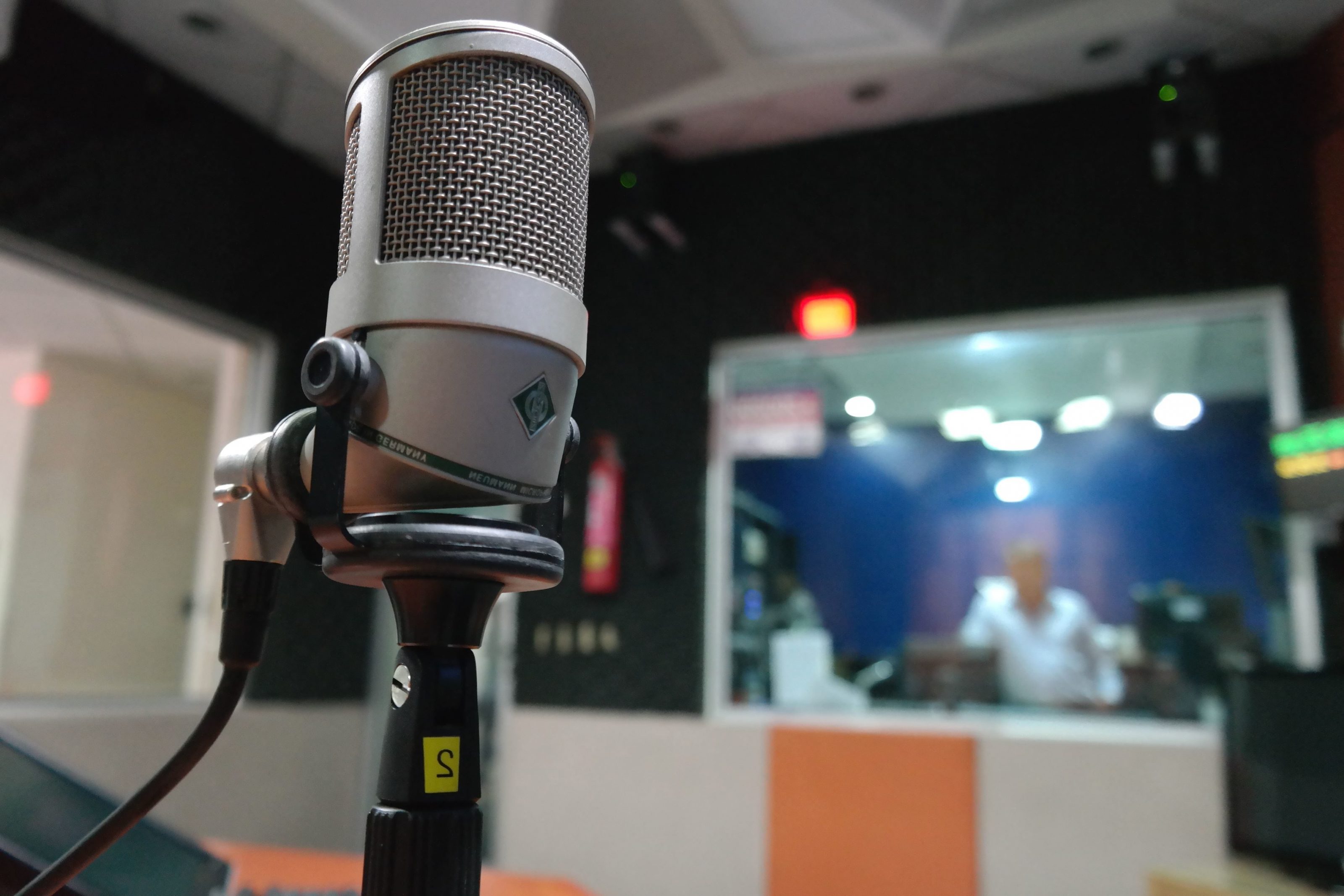
The question of preference matters as well, of course. That is, what kind of song are you producing? If you want that more synthetic, T-Pain inspired sound popularized by Auto-Tune, these programs can help achieve that. Maybe you just want a smooth, shiny vocal line that competes with modern pop music standards. Or, on the other end of the spectrum, you might want the vocals to sound nearly untouched. Even the rawest sounding vocals can be tweaked to better blend into the mix and stay properly in tune. Best of all, these vocals will still maintain their original grit and realism.
Conclusion
Pitch correction offers the flexibility to modulate notes in time, pitch, and tone to whatever degree suits the goals of the mix. Auto-Tune might get a bad rap for overthrowing the integrity of music production, but it and comparable programs ultimately put the control in the user’s hands. The degree to which notes are modified or left alone depends on the program you use and the mix you desire. These tools have led to better productions, more efficient workflows, and infinite creative possibilities, regardless of one’s personal objections or hangups.
About the Author

Ethan Keeley
Writer, Voice Talent, Musician, and Audio EditorEthan Keeley is a musician, voiceover talent, and writer from Rochester, New York. When he's not on tour with his band Unwill he's working on new songs and stories.
Leave a comment
Log in to comment

